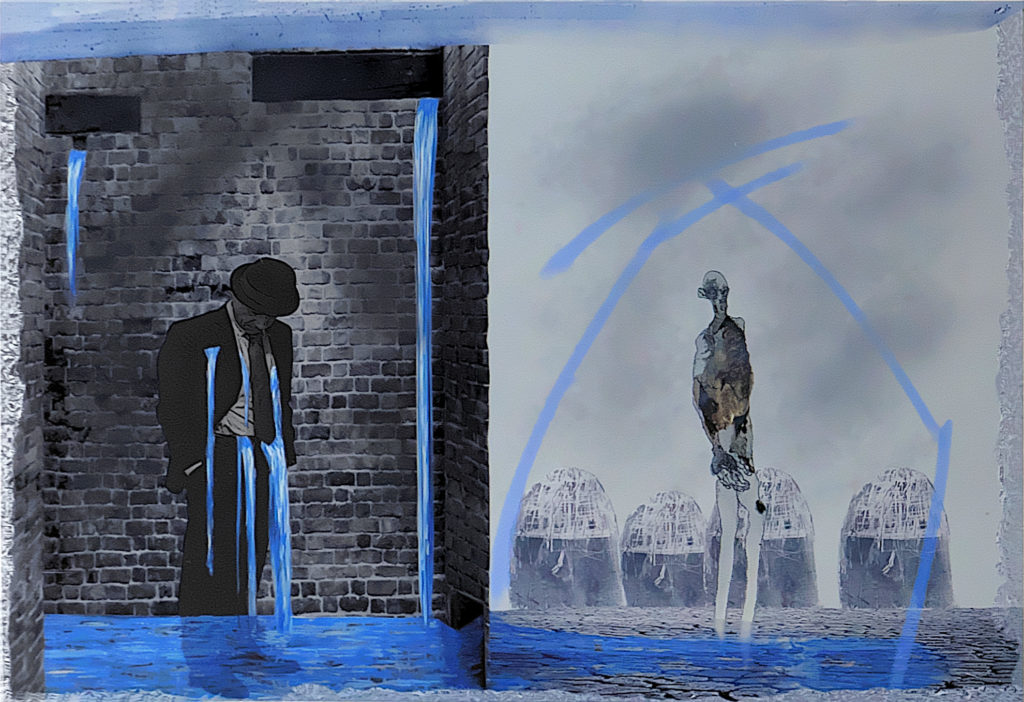More than 800 million people in the world lack basic drinking water. Government budgets may increase; still, the UN 2019 report highlights financial resources as a major constraint to achieve appropriate investments (1). Inevitably, this unacceptable figure questions the scope of institutional statements recognizing “the right to safe and clean drinking water as a human right” (UNGA, 2010) or aiming to “implement integrated water resources management at all levels, including through transboundary cooperation as appropriate” (2). Where is the missing link? And how resilient are cities when climate change exacerbates one of the oldest gestures of humanity: drinking?
The publication of M. Falkenmark & Al (3), “Understanding of water resilience in the Anthropocene”, showing how intertwined are the interactions within the full water cycle, has the merit of capturing the complexity of the processes involved. Their review of evidences that human pressure on our planet may trigger tipping points, questioning what implications the loss of water resilience will have on our societies, introduces the need to move beyond the sole blue water management (4). But such complexity could lead to an undesirable consequence: considering the basic right to drink water as a wicked problem due to the difficulty to meet the required conditions for addressing such issues. Paradoxically, the design and engineering knowledge to fight water scarcity in arid environments seems second to none (5). But this looks like an apparent paradox. The truth is that required investments will go most likely to places where the return on investment is guaranteed. Corporate companies may bring forward ethical guidelines, water development happens too often at the expense of good governance, environmental and social considerations. The case of Wajir county, Kenya, speaks for itself as the unfortunate example of a management initiated by politicians ignoring the basic needs of the population (6).
Water risks have threatened human civilizations over millennia. But climate change combined with social exclusions and demography creates a new urgency. What is the meaning of resilience when addressing such issue? Water disasters are not only a function of hazards and related technical solutions. They depend on vulnerabilities; they are not natural. Dying of thirst makes no exception to the rule. Water scarcity in arid countries sounds like an absolute failure of our duty to reconsider the capitalistic paradigms that have increased vulnerability over time. In a comprehensive note (7), M. Barlow, chairing both Council of Canadians and Food & Water Watch organizations, demonstrates how detrimental free trade agreements are to safeguard the basic need of humanity. FTA’s pave the way to privatization and commodification, treating water as a tradable good, as an investment. Communities see their water diverted from local productions to export-oriented agribusiness, with the Global North importing food from harvests of water-poor areas. More than 20% of the world water supplies go towards crops used for exports, at the expense of fresh water, often from countries where governance policies are lacking. To strengthen their investments, corporations may also sue local governments, thus protecting their interests in a deeply undemocratic approach.
So what does resilience mean for urban water services? In the context of disasters risk reduction, the United Nations have defined resilience (8) in a positive way echoing engineering and technological drivers. In contrast, the community of research has enlarged its definition, encompassing the degree to which socio-ecological systems can build capacity for learning and adaptation (Adger & al. 2005:1036) introducing so the notion of bouncing forward instead of bouncing back. But both approaches do not give any insight on the means to treat water as it should be deserved: a common good for humanity. A. Johannssen & C. Wamsler (9), reviewing the relevant literature on how resilience may address urban water services, concluded that seven key principles were needed to move from “knowledge to action”. We can all accept the challenge of the task, but speaking of one of the oldest gestures of humanity, the pressing need to regulate capitalistic excesses wherever human rights are violated is not negotiable.
Inspired by South African and French artists, William Kentridge and Anne Kolin, the below work speaks about our consumer-capitalistic society and disconnected behaviors, infringing basic human rights. It echoes what sociologist Bauman called the passage from “solid” to “liquid” modernity (10), suggesting an ever evolving society where sustainability and social constructions are undermined. The metaphoric opposition between the North and the South translates here into a new symbolic dimension of Bauman’s liquidity, with a free-flowing misused water turning into a dried stream binding both hemispheres, recalling to the North its universal responsibility.

- https://en.unesco.org/themes/water-security/wwap/wwdr/2019
- https://www.sdg6data.org/
- https://doi.org/10.1016/j.hydroa.2018.100009
- http://ubclfs-wmc.landfood.ubc.ca/webapp/VWM/course/global-water-challenges-1/green-and-blue-water-cycle-2/
- https://www.arup.com/perspectives/water
- http://www.braced.org/news/i/The-paradox-of-water-development-in-Kenyas-drylands/
- https://canadians.org/wfs
- https://www.unisdr.org/files/7817_UNISDRTerminologyEnglish.pdf
- https://doi.org/10.5751/ES-08870-220101
- https://giuseppecapograssi.files.wordpress.com/2014/01/bauman-liquid-modernity.pdf
